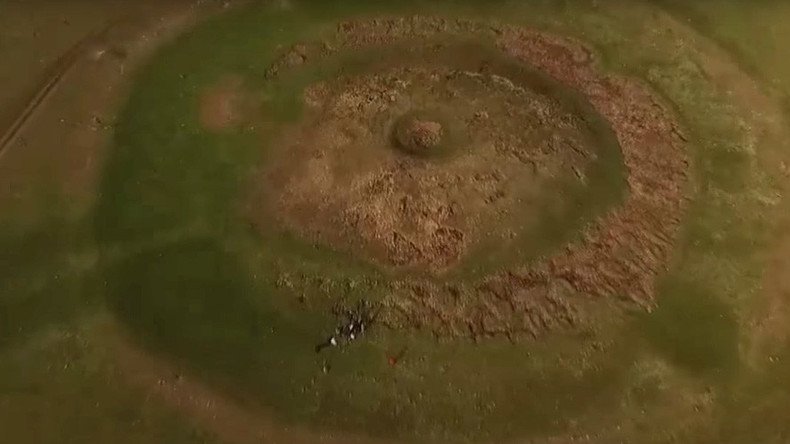Mysterious 3,000-year-old ‘sun altar’ discovered in northwest China

Archaeologists are raving about the “major” discovery of a huge sun altar in China’s northwest Xinjiang Uygur Autonomous Region.
The Bronze Age altar dedicated to sun worship, was first discovered in 1993, but excavations did not begin in earnest until late last year. The excavations have now revealed that the structure has striking similarities to the kind of temples previously only seen much farther west on the Eurasian plains, Sina.com reports.
READ MORE: Ancestors of ancient Egyptians came from Europe and Middle East, says study
Sun temples were built by the nomadic tribes that once roamed the vast Eurasian steppe, however, no such temple has previously been discovered this far east.
WOW!!!! China: Ancient sun altar https://t.co/ROoYv0zn6c
— Sean MacLellan (@SeanMaclellan) June 22, 2017
Liu Chuan-ming, one of the archaeologists studying the site, says the discovery proves that the ancient culture in Xinjiang bared striking similarities to other regions in central Asia.
“[It] confirms that the Central Plains culture reached the foot of the Tian Shan Mountains, in the Bayanbulak Grassland, causing the Silk Road to reach all the way to the throat of the country,” Chuan-ming said.
The altar is built up from circular layers of cobbles and mud and has three different stone layers. The outermost ring is over 100 meters in diameter. Despite being more than 3,000 years old, the main structure is reportedly still intact and remarkably well preserved.
Archaeologists believe those who built the temple would have had to pull stones across great distances to construct the monument.
READ MORE: Barley recognizable: Resurrected 5,000yo Chinese beer resembles oatmeal












